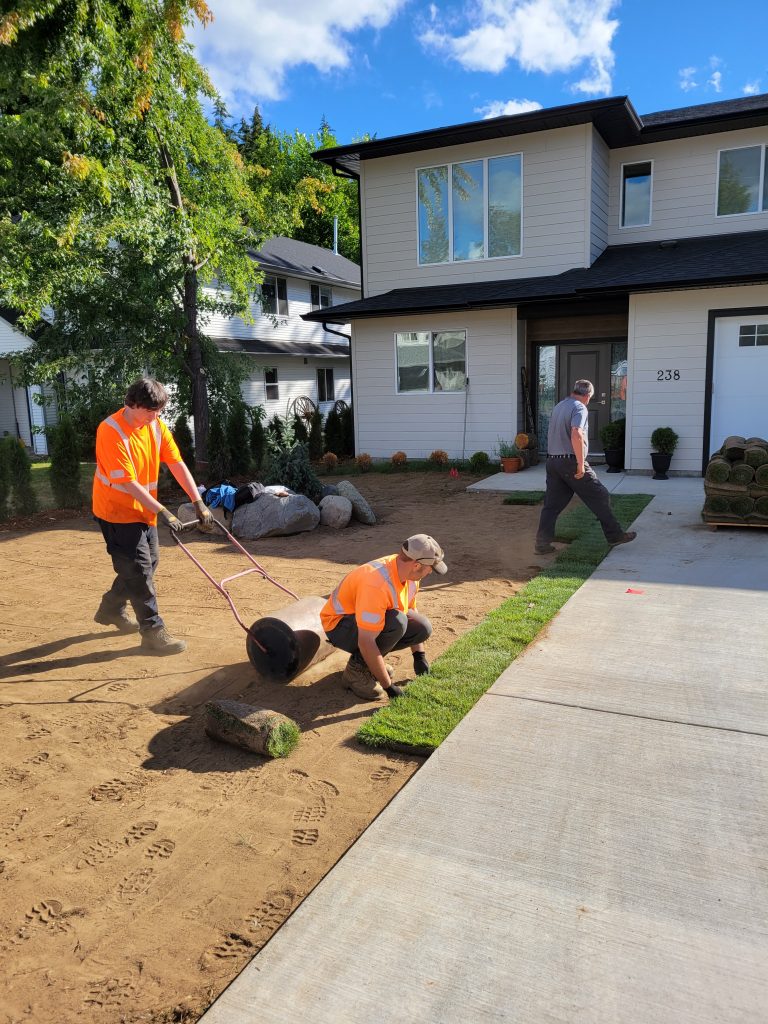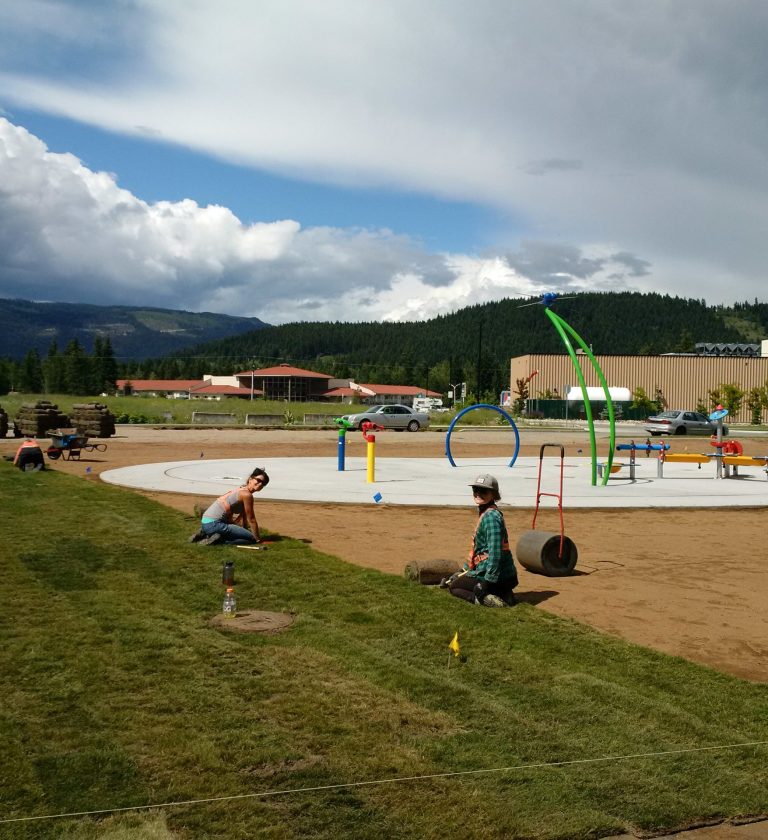Lawn Care
Lawn Care
MAC RIVER ENTERPRISES Ltd is pleased to offer quality performance for your personal and commercial lawn care needs.
Benefits of Lawn Care
Our dependable scheduled maintenance gives our clients the freedom to enjoy curb appeal and time to engage in other activities, knowing that their lawn care needs are consistently being met.
Our dedicated team works hard to get the job done. You and your lawn will thank us!

Examples of
MRE Lawn Services
We work hard throughout the seasons.
Let us apply our knowledge and expertise to keep your lawns healthy and green.
- Commercial Lawn Care
- Residential Lawn Care
- Turf Installation
- Commercial Thatching
- Lawn Recovery
- Lawn Repair
- Fertilizing & Soil Improvement
- Reseeding
- Weeding
- Irrigation
View Our Lawn Care Projects!
Answers to Common Questions:
On an average, your lawn needs 2 to 3 cm of water per week, and even three times per week in the warmer months. If your lawn is established from years of growth, you can sufficiently adjust the watering frequency to one watering per week.
1) Areate your lawn. The main idea for aerating your lawn is to create small holes in the ground, allowing air, water, and essential nutrients to reach the plant roots easily.
2) Topdress the browning spots with compost.
3) Reseed your lawn.
Ensure sprinklers are set so that only lawn and gardens are watered not the roadway
EFFECTIVE PERIOD~ May 15 to September 30 each year.
~ Properties with even numbered houses are allowed to water on even numbered days.
~ Properties with odd numbered houses are allowed to water on odd numbered days.
Aerating involves making holes in your lawn either by pushing a rod into it or by extracting a plug of soil. This allows a better flow of water, air and vital nutrients to the plant roots, making it easier for them to grow. This does not, however, apply to soil types containing clay. It is best to aerate in late summer, rather than top-dress and/or overseed.
Signs of your lawn needing aerating are:
- The ground is hard and compacted.
- Thatch is building up.
- Water does not penetrate well.
- Weeds, like prostrate knotweed and clover, are present.
An aerator is either aa solid-tined machine that drives spikes into the ground or a coring machine that removes small plugs of thatch and soil.
Thatch is a tough mixture of dead grass and roots that gathers above the soil surface. In a healthy lawn, insects, earthworms, beneficial fungi and other microorganisms break down thatch and aerate the soil.
Excessive watering, over fertilizing with nitrogen, and heavy use of insecticides and fungicides may decrease the number of soil organisms needed to keep thatch levels down. Thatch that is more than 1 cm (1/2 inch) thick can prevent water, air and nutrients from getting to the roots. Too much thatch can also harbor harmful insects and diseases.
If your property is looking somewhat shabby, look for undergrowth. Removing it will make your property look neat improving its overall appearance. If you are planning to sell your home, curb appeal will give a good first impression to a potential buyer.
Water deeply but not to often.
-Too much watering can lead to poor growing conditions and disease problems.
-Water only when your lawn needs it, usually no more than once a week when there is no rainfall.
-Apply at least 2.5cm (1 inch) of water. Place a tuna or pet food can on your lawn to measure how much you’ve watered. Stop watering when it is full.
-Consider the soil type and surface features. Grass growing on compacted, fine soil or on a slope needs lighter, more frequent watering
Watering in the morning reduces water lost from evaporation and wind.
watering in the evening leaves the grass wet for longer, increasing the risk of disease.
Grass growing near large trees may need to be watered more often, because the tree roots absorb much of the soil’s water.
In extended hot, dry periods, a lawn may wilt, turn brown and become dormant.
A healthy lawn can survive several weeks in a dormant state.
Common grass varieties like Kentucky bluegrass and fine fescues will turn green again when regular moisture conditions return.
Compost is a great fertilizer that supplies your lawn with nutrients needed for plant growth.
- It is best to apply fertilizer in spring and late summer.
- Mix fertilizer into the soil before seeding or laying sod, or spread it in a thin layer raked over your existing lawn.
Organic fertilizers release more nutrients as the temperature and moisture levels increase, so you shouldn’t fertilize when conditions are likely to be hot or dry (usually from mid June to early August).
Commercial fertilizers usually contain three major nutrients:
Nitrogen (N) to promote leaf growth.
Phosphorus ( P), for root growth.
Potassium (K), which is essential for stress resistance.
The three numbers on the packaging show the proportions of these nutrients. For example, a 21-7-7 formulation contains 21% nitrogen (N) and 7% of each of phosphorus (P) and Potassium (K).
All-purpose turf fertilizers usually have a N-P-K ratio of 4-1-2.
Fertilizers with a slow-release form of nitrogen are better because they release nutrients uniformly, and there is less risk of excess fertilizer leaching away from the root zone.
This depends on the type of soil, the type of grass, site and weather conditions. Follow all instructions on the product label.
Most healthy lawns recover from damage. Depending on the type of grass, fast growing lawns will fill in areas that have been thinned by insects or other type’s of damage.
If bare patches do not fill in quickly, weeds may set in.
Seeding grass seed on your lawn regularly will ensure that it remains dense.
Using the proper type of grass seed is very important for lawns in shady areas
Top-dressing with compost or topsoil can be done at the same time as seeding. Apply topsoil first, then seed over top and press or rake seed into the soil. Keep the new seed well watered until the new grass is established.


